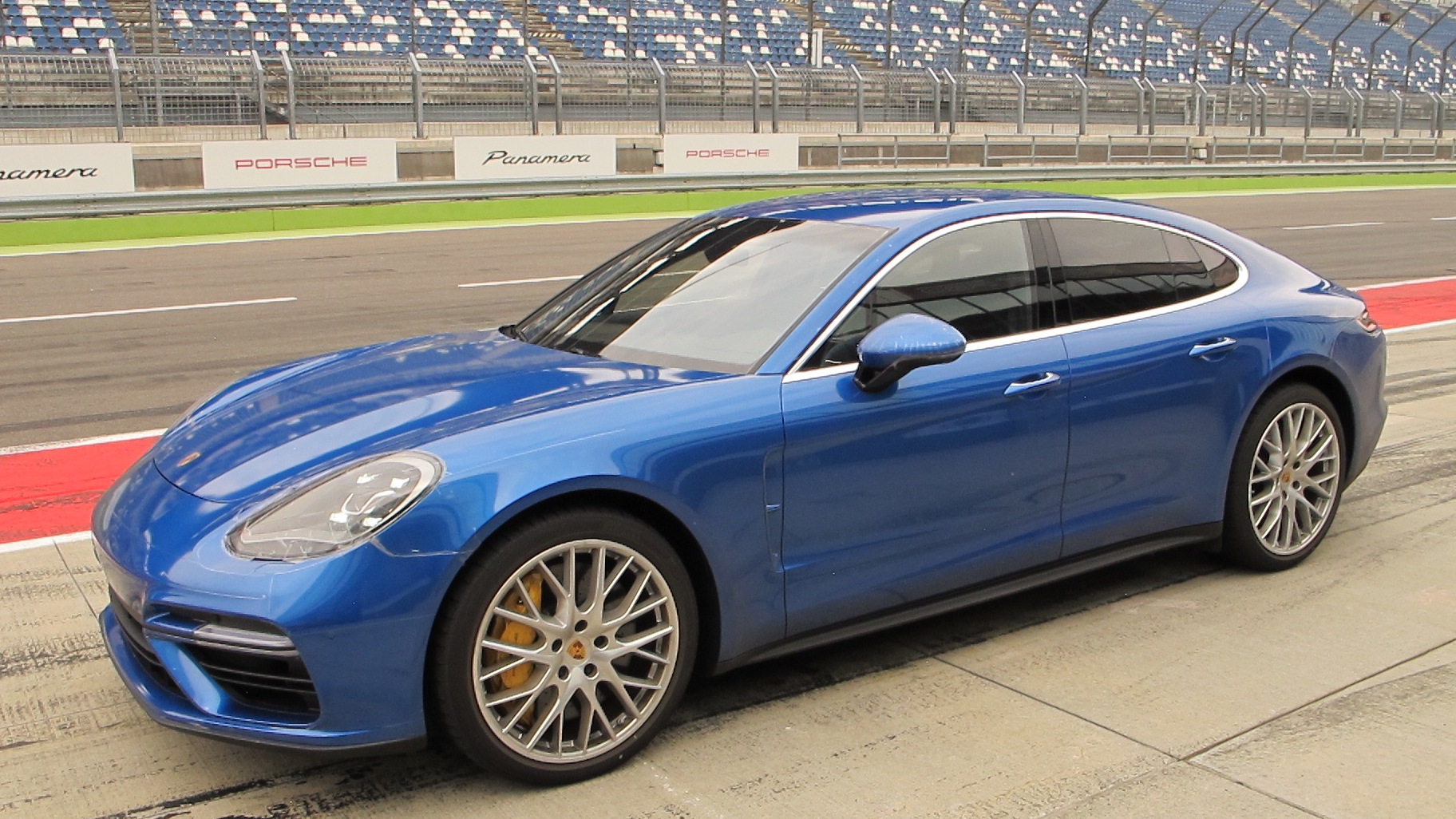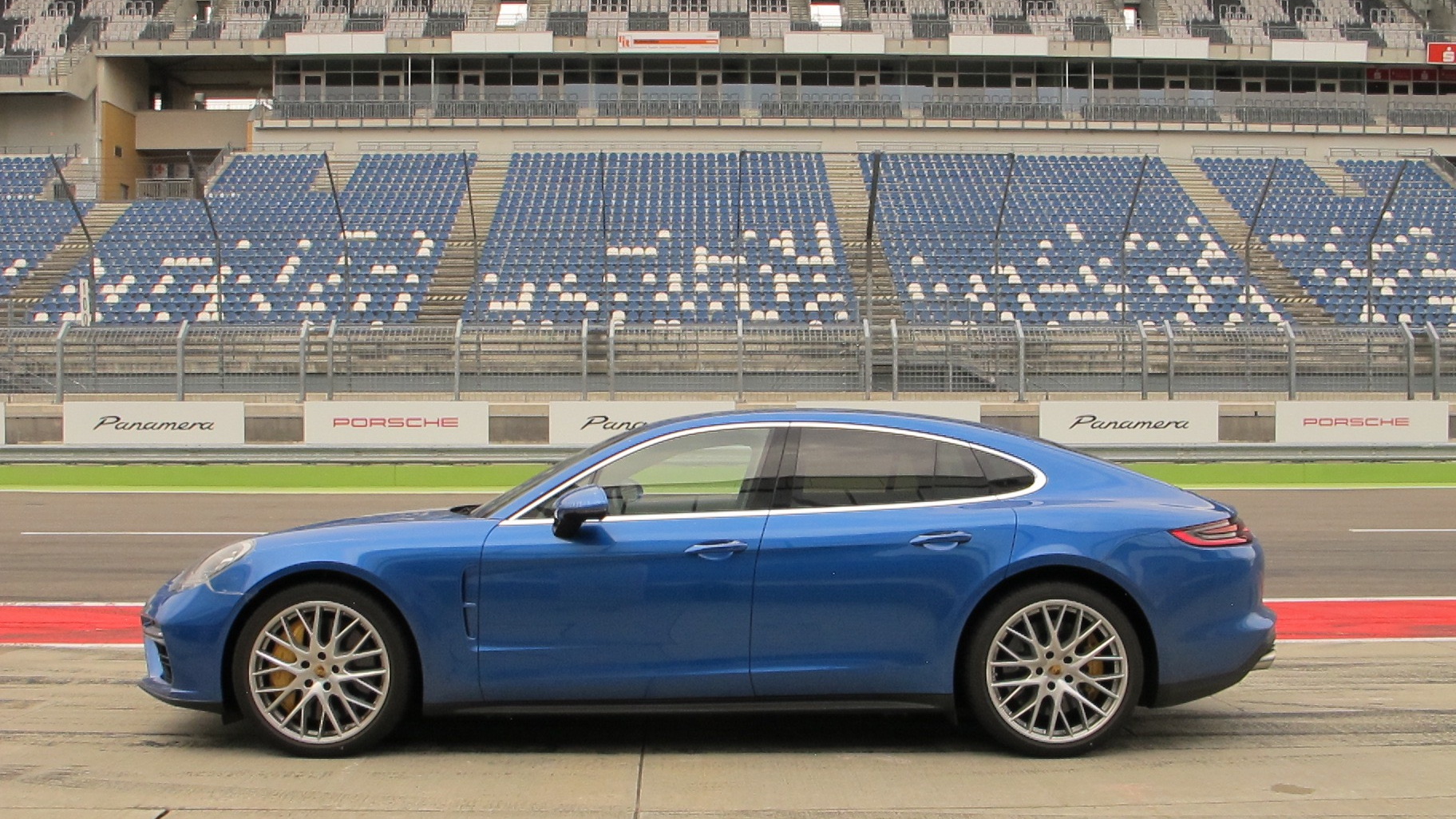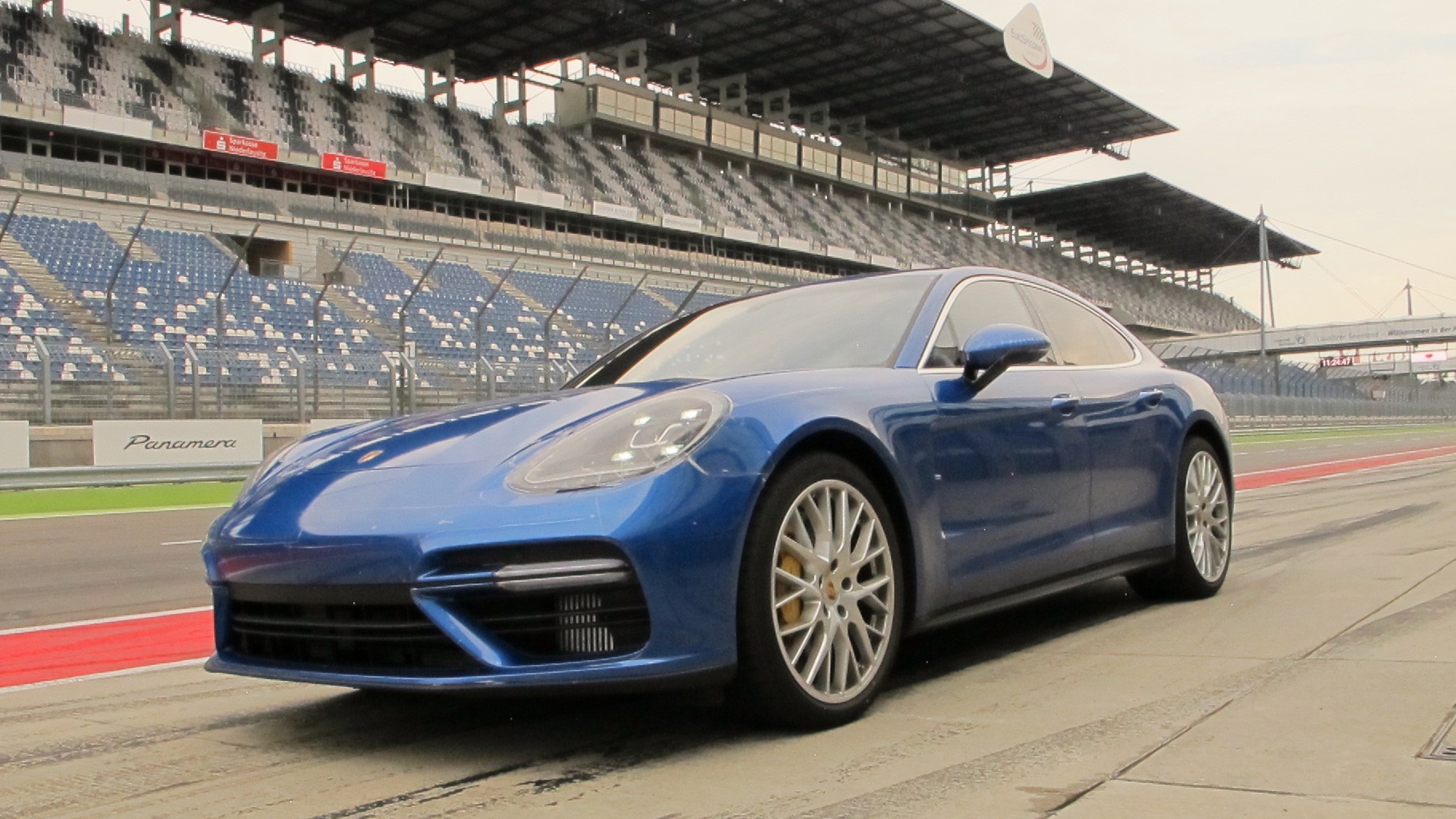The 2017 Porsche Panamera Turbo may not hit the streets until next January, but we've already had the opportunity to go for a spin.
And what a spin it was! Porsche gave journalists rides at the Lausitzring (also called Eurospeedway Lausitz) road course near Dresden, Germany. Much like the infield course at Daytona International Speedway, the Lausitzring offers high-speed banked corners, long straights, and some tight switchbacks, all of which really test the handling, braking, and acceleration capabilities of the cars that brave it.
I had the opportunity to take several test rides with various Porsche development engineers. Forgive the quality of this video. I was filming with my iPhone and was subject to the forces of gravity in four directions.
But video quality doesn't really matter. What does matter is how the Panamera Turbo did on a racetrack. In a word? Excellent.
CHECK OUT: 2017 Porsche Panamera deep dive
Of course, the Turbo models Porsche put on the track were loaded with such features as rear-axle steering, active stabilizer bars, air suspension, adaptive dampers, and torque vectoring that uses both an active rear differential and targeted braking of the rear inside wheel to help send power to the outer wheel in a turn. The cars also had the optional 21-inch Michelin Pilot Sport 4 tires, as well as the optional carbon ceramic brakes with massive 16.5-inch front and 15.3-inch rear rotors, both clamped down upon by 10-piston calipers.
All that hardware makes the Panamera Turbo a genuine track hero, at least that's how it felt from my perch in the passenger seat. Keep in mind that this is a large luxury car that competes with the likes of the Mercedes-Benz S-Class and BMW 7-Series.
As the video shows, the car's launch control makes this thing launch violently, and I mean that in a good way. I was quite surprised how hard this car accelerates, and I don't at all dispute Porcshe's quoted 3.4-second 0 to 60 mph claim. Heck, this 550-horsepower beast may even be faster.
ALSO SEE: Why Ford is making a huge mistake with its new GT
After that initial start, the Panamera goes into sports car mode. It may weigh around 4,500 pounds, but it handles like a smaller car. It carves through corners that would induce massive understeer in most big cars, and it stays impressively flat while doing so. I credit that to the rear-axle steering, which virtually shortens the wheelbase, and the torque vectoring, which also aids rotation.
Those manhole cover carbon ceramic brakes bring all that weight to a stop with ease, and they handled numerous laps without overheating.
There is some concern that all of the Panamera's electronics may take away the feel from the driver and prevent the more rambunctious among us from kicking the tail out or drifting the car through corners. As you can see at the 49-second mark, drifting is quite possible in Sport Plus mode. I can't speak to how the car feels, but this video shows that the Panamera can get around a track very quickly.
In fact, Porsche shared a little stat. The new Panamera Turbo put up a 7-minute, 38-second run at the Nurbürgring, setting the record for production sedans. That matches the time Porsche posted with a 997-generation 911 Turbo in 2008.
At this point, I can tell you that the numbers are there and the car feels impressive from the passenger seat. I'm guessing it's pretty good from the driver's seat, too. I'm looking forward to my turn behind the wheel.






